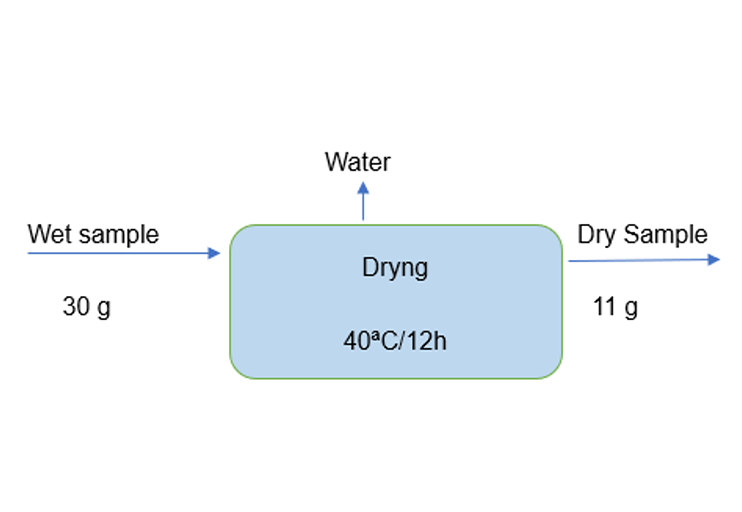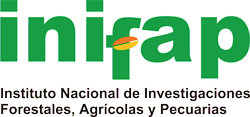Actividad antioxidante y composición del Clinopodium tomentosum en extracción húmeda y seca
DOI:
https://doi.org/10.29312/remexca.v16i3.3630Palabras clave:
bioactivo, extractos, fitoquímicos, principio activoResumen
En la antigüedad, diversas especies de plantas fueron empleadas en la medicina tradicional debido a sus propiedades, siendo aprovechadas en diversos procesos, ya sea en el ámbito alimenticio o farmacéutico. El propósito de este estudio fue la caracterización de los componentes bioactivos, específicamente antioxidantes y polifenoles, presentes en el Clinopodium tomentosum en muestras tanto secas como húmedas. Se implementó un método de extracción asistido por ultrasonido para la obtención de principios activos. Posteriormente, se realizó la identificación y cuantificación de los compuestos obtenidos mediante los ensayos de capacidad antioxidante Ferric Reducing Antioxidant Power y Folin-Ciocalteu. Como resultado de este proceso, se observó que la extracción en materia seca proporciona un rendimiento superior, con concentraciones de 1.49 mg L-1 de polifenoles y 1.27 mg L-1 de antioxidantes, en comparación con la extracción en estado húmedo, que arrojó concentraciones de 1.39 mg L-1 de polifenoles y 1.04 mg L-1 de antioxidantes. La caracterización de la Clinopodium tomentosum ha permitido la identificación de sus componentes bioactivos, abriendo la puerta a investigaciones futuras sobre la identificación de los componentes fitoquímicos y su potencial aplicación en las industrias alimentaria y no alimentaria.
Descargas
Citas
Antolovich, M. A. and Crozier, A. M. 2000. Sample preparation in the analysis of antioxidants. Analyst. 125(5):989-1009. Doi.org/10.1039/b006426j.
Benzo, M.; Gilardoni, G.; Gandini, C.; Caccialanza, G.; Finzi, P. V.; Vidari, G. and Layedra, P. 2007. Determination of the threshold odor concentration of main odorants in essential oils using gas chromatography olfactometry incremental dilution technique. Journal of Chromatography A. 1150(1-2):131-135. Doi.org/10.1016/j.chroma.2006.11.008.
Boots, A. W.; Haenen, G. R. and Bast, A. B. 2008. Health effects of quercetin: from antioxidant to nutraceutical. European Journal of Pharmacology. 585(2-3):325-337. Doi.org/10.1016/j.ejphar.2008.03.008.
Drew, B. T. and Sytsma, K. J. 2012. Phylogenetics, biogeography and staminal evolution in the tribe Mentheae (Lamiaceae). American Journal of Botany. 99(5):933-953.
Duthie, S. J.; Ma, A. B.; Ross, M. A. and Collins, A. R. 1996. Antioxidant supplementation decreases oxidative DNA damage in human lymphocytes. Cancer Research. 56(6):1291-1295.
Ebert, A. W. and Engels, J. M. 2020. Plant biodiversity and genetic resources matter! Plants. 9(12):1706.04-06.
Enríquez-Estrella, M. 2021. Evaluation of the antioxidant capacity and phenolic content of the essential oil of dry and wet leaves of guaviduca (Piper carpunya Ruiz & Pav.). Semiárida. 31(1):09-15. Doi.org/10.19137/semiarida.2021(01).09-15.
Enriquez-Estrella, M. A.; Arboleda, L. F.; Salous, A. K. and Torres, S. H. 2023. Biological activity of lemongrass (Cymbopogon citratus) and its applications in the industry. Journal of Science and Technology. 40(1):90-97. Doi.org/10.36995/j.recyt.2023.40.010.
Estrella, J. 2015. Biodiversity and genetic resources: a guide for their use and access in Ecuador, Quito. EcoCiencia.
Fitzgerald, M. D.; Heinrich, M. A. and Booker, A. E. 2020. Medicinal plant analysis: A historical and regional discussion of emergent complex techniques. Frontiers in Pharmacology. 10(1):3-5.
Gachet, M. S.; Lecaro, J. S.; Kaiser, M. R.; Brun, R. A.; Navarrete, H. A.; Munoz, R. A. and Schühly, W. A. 2010. Assessment of anti-protozoal activity of plants traditionally used in Ecuador in the treatment of leishmaniasis. Journal of Ethnopharmacology. 128(1):184-197.
González-Rodríguez, R. and Cardentey-García, J. 2016. Knowledge about natural and traditional medicine by residents of general integral medicine. Revista Medicina Electrónica. 38(5):689-696. http://scielo.sld.cu/scielo.php?script=sci-arttext&pid=S168418242016000500004&lng=en.
Jarić, S.; Kostić, O.; Mataruga, Z.; Pavlović, D.; Pavlović, M.; Mitrović, M. and Pavle, P. 2018. Science Direct. Retrieved from https://www.sciencedirect.com/science/article/abs/pii/S0378874117321852#preview-section-introduction.
Justicia, R. M. 2007. Ecuador's chocó andean corridor: a landscape approach for conservation and sustainable development (University of Georgia). http://getd.libs.uga.edu/pdfs/justicia-rebeca-m-200712-phd.pdf.
McGaw, L. J.; Jäger, A. C.; Grace, O. O.; Fennel, C. A. and Staden, J. V. 2005. Medicinal plants. In ethics in agricultura an African perspective. Dordrecht. Springer Netherlands. 67-83 pp.
Naczk, M. and Shahidi, F. 2006. Phenolics in cereals, fruits, and vegetables: Occurrence, extraction, and analysis. Journal of Pharmaceutical and Biomedical Analysis. 41(5):1523-1542.
Pulsan, A.; García-Collado, M.; Fernández-Ortega, M. and Torres-Quiala, M. 2015. Phytotherapy and apitherapy in the work of José Martí. Revista Información Científica. 92(4):945-955. http://www.revinfcientifica.sld.cu/index.php/ric/article/view/212/1384.
Saltos, M. B. V.; Puente, B. F. N.; Malafronte, N. A. and Braca, A. B. 2014. Phenolic compounds from Clinopodium tomentosum (Kunth) Govaerts (Lamiaceae). Journal of the Brazilian Chemical Society. 25(11):2121-2124.
Teng, H. K.; Ghafoor, K. H. and Choi, Y. H. 2009. Optimization of microwave assisted extraction of active components from Chinese quince using response surface methodology. Journal of the Korean Society for Applied Biological Chemistry. 52(1):694-701. https://doi.org/10.3839/jksabc.2009.114.
Turkmen, N. A.; Sari, F. A. and Velioglu, Y. S. 2006. Effects of extraction solvents on concentration and antioxidant activity of black and green tea polyphenols determined by ferrous tartrate and Folin Ciocalteu methods. Food Chemistry. 99(4):835-841. https://doi.org/10.1016/j.foodchem.2005.08.034.
Zambrano, L.; Buena, M.; Mancera, J. and Jiménez, E. 2015. Ethnobotanical study of medicinal plants used by the inhabitants of the rural area of Parroquia San Carlos, Quevedo, Ecuador. Universidad y Salud. 17(9):97-111.
Zielińska, S. C. and Matkowski, A. B. 2014. Phytochemistry and bioactivity of aromatic and medicinal plants from the genus Agastache (Lamiaceae). Phytochemistry Reviews. 13(3):391-416.

Descargas
Publicado
Cómo citar
Número
Sección
Licencia
Derechos de autor 2025 Revista Mexicana de Ciencias Agrícolas

Esta obra está bajo una licencia internacional Creative Commons Atribución-NoComercial 4.0.
Los autores(as) que publiquen en Revista Mexicana de Ciencias Agrícolas aceptan las siguientes condiciones:
De acuerdo con la legislación de derechos de autor, Revista Mexicana de Ciencias Agrícolas reconoce y respeta el derecho moral de los autores(as), así como la titularidad del derecho patrimonial, el cual será cedido a la revista para su difusión en acceso abierto.
Los autores(as) deben de pagar una cuota por recepción de artículos antes de pasar por dictamen editorial. En caso de que la colaboración sea aceptada, el autor debe de parar la traducción de su texto al inglés.
Todos los textos publicados por Revista Mexicana de Ciencias Agrícolas -sin excepción- se distribuyen amparados bajo la licencia Creative Commons 4.0 atribución-no comercial (CC BY-NC 4.0 internacional), que permite a terceros utilizar lo publicado siempre que mencionen la autoría del trabajo y a la primera publicación en esta revista.
Los autores/as pueden realizar otros acuerdos contractuales independientes y adicionales para la distribución no exclusiva de la versión del artículo publicado en Revista Mexicana de Ciencias Agrícolas (por ejemplo incluirlo en un repositorio institucional o darlo a conocer en otros medios en papel o electrónicos) siempre que indique clara y explícitamente que el trabajo se publicó por primera vez en Revista Mexicana de Ciencias Agrícolas.
Para todo lo anterior, los autores(as) deben remitir el formato de carta-cesión de la propiedad de los derechos de la primera publicación debidamente requisitado y firmado por los autores(as). Este formato debe ser remitido en archivo PDF al correo: revista_atm@yahoo.com.mx; revistaagricola@inifap.gob.mx.
Esta obra está bajo una licencia de Creative Commons Reconocimiento-No Comercial 4.0 Internacional.


